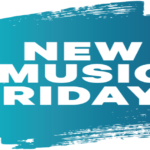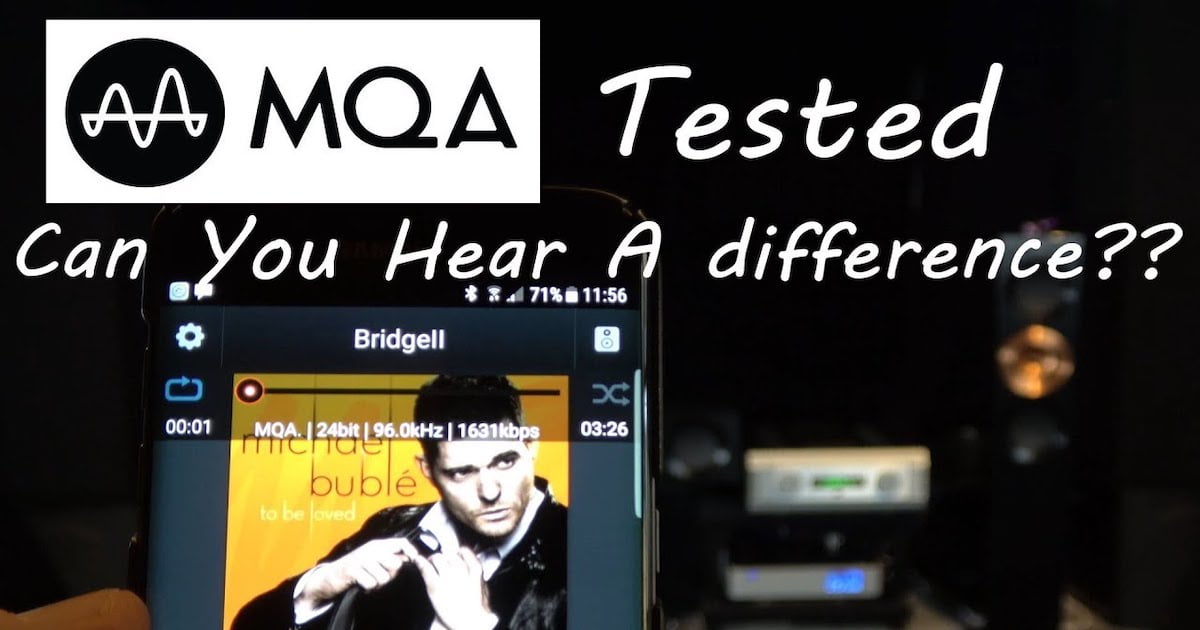It’s the time of year for saving money!
Oh, man…
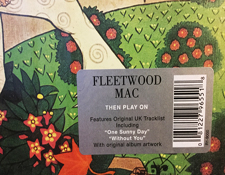 I sure picked a fine album to designate as “The One” that would change my mind about a band I used to not like at all… That “One” album that is so good it stands up proudly along all the finest releases of its day such as the first couple Led Zeppelin albums… The Pretty Things’ Parachute… Blind Faith… Tommy… The Kinks’ Arthur… and, yes, even The Beatles’ Abbey Road.
I sure picked a fine album to designate as “The One” that would change my mind about a band I used to not like at all… That “One” album that is so good it stands up proudly along all the finest releases of its day such as the first couple Led Zeppelin albums… The Pretty Things’ Parachute… Blind Faith… Tommy… The Kinks’ Arthur… and, yes, even The Beatles’ Abbey Road.
That “One” album I completely missed along the way.
Fleetwood Mac’s Then Play On is that album and it is that good.
But… oh, man…. is it confusing to figure out which versions to get and whether to bother with keeping old copies around (especially as a newbie fan).
My journey to appreciating Fleetwood Mac has been bumpy. I never liked them when I was growing up — in Jr. High you couldn’t escape hearing tracks from their eponymously titled mid 70s album and its follow up, Rumors, everywhere you went. It was ok and the hooks were undeniably catchy, but I never connected with the music emotionally.
Over the years friends tried to turn me on to Tusk and then the uber-hip out-of-print Buckingham-Nicks album. But, no. I still wasn’t biting.
Then something sort of amazing happened. A friend of a friend gave me his entire record collection as he was purging things from his past lives. Yes, he gave it to me, about 1000 albums. I tried to offer him some money, but he wouldn’t have it.
Admittedly, there was a lot of beat up and common pop stuff there which I immediately donated to a favorite local thrift shop (where all proceeds from sales go to charities you can designate). And there was a bunch of stuff I had, some of which were upgrade copies.
But also, there were a bunch of albums there by artists I hadn’t really dug down into including all of the key Fleetwood Mac albums.
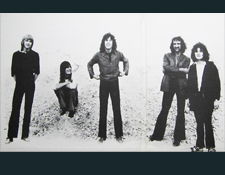 I started to explore them, playing the early stuff first. When I put on Then Play On, my jaw kind of dropped as I finally realized what all the buzz about this band’s past was about. For the first time I could hear that at its core, the core band of Fleetwood Mac that made all those slick, super smash mid-70s pop albums really had the rock chops from their days doing raw bluesy stuff, first with John Mayall’s Bluesbreakers and later with the early, rawer, bluesier Mac. Peter Green’s Fleetwood Mac, if you will.
I started to explore them, playing the early stuff first. When I put on Then Play On, my jaw kind of dropped as I finally realized what all the buzz about this band’s past was about. For the first time I could hear that at its core, the core band of Fleetwood Mac that made all those slick, super smash mid-70s pop albums really had the rock chops from their days doing raw bluesy stuff, first with John Mayall’s Bluesbreakers and later with the early, rawer, bluesier Mac. Peter Green’s Fleetwood Mac, if you will.
I get it now. Better late than never…
So I enjoyed the copy of Then Play On which had been given to me from my friend’s friend’s collection. And then shortly there after at a garage sale I serendipitously found an original pressing (with the orange top Reprise label) with a different track listing. A little research on the Wiki revealed a multitude of sins committed by the music industry to this record here in America including deleting some tracks and sloppily editing others. I decided I needed to keep both editions, at least until I could find a — hopefully — complete original UK edition.
It’s never quite that easy….. but … the other day I came across a reissue pressing which I decided to try.
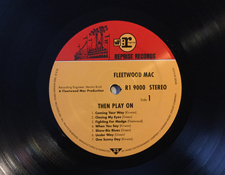 So this standard weight domestic U.S. reissue pressing restores the original UK edition’s 14-track running order for (as far as I can tell) the first time. My original U.S. pressing of Then Play On has almost the same track listing, except it is missing “On A Sunny Day” and “Without You.” The later 1970s pressing not only loses those tracks (Danny Kirwan’s “My Dream” and “When You Say”) but also instead replaces them with “Oh Well,” a single which had become a hit around that time.
So this standard weight domestic U.S. reissue pressing restores the original UK edition’s 14-track running order for (as far as I can tell) the first time. My original U.S. pressing of Then Play On has almost the same track listing, except it is missing “On A Sunny Day” and “Without You.” The later 1970s pressing not only loses those tracks (Danny Kirwan’s “My Dream” and “When You Say”) but also instead replaces them with “Oh Well,” a single which had become a hit around that time.
Remember what I said about this album being a confusing one to figure out?
So if you are a completist type collector you can sort of see my dilemma: while the new reissue is the most complete and authentic version of the album — again, featuring the original UK track listing — I’d still want to have “Oh Well” in some form. And then of course there is the dilemma of keeping the original US pressing for the sake of the collection — its a rarity and not something you just toss away even in average condition.
Someone told me about a handy compilation CD which collects all the disparate tracks, restores “Oh Well” to its A- and B-sides (the two parts of the single had been poorly edited back in the day for the album) and even includes some other bonus tracks. In fact, I’m ordering it right now as I am writing this. For $10, its a no brainer that I should own a copy of this for mobile use and such.
Knowing that I’ll have that in hand, I think I can probably safely get rid of the late 70s pressing (with the hastily assembled version of “Oh Well” stuck in there — after all, when am I really going to “want” to hear that version again?). Until I find an original UK pressing — apparently very hard to find in any sort of playable condition — this new reissue will have to suffice. And I’m OK with that.
 In fact, this new reissue of Then Play On sounds really really good. Its probably mastered a little more quietly to fit the long album on two sides of a disc. I’ve not found any firm confirmation of this but this may likely have been mastered by Bernie Grundman Mastering and pressed at RTI (at least this is what is listed on the record collector’s website Discogs) . The standard weight (probably 140 gram) vinyl plays silently and the pressing is well centered. Most importantly, the music on it sounds really good and very similar to my other pressings, and is in many ways better than my other copies — quieter vinyl for sure and a nicer sense of dynamic range especially when you turn up the volume on your amp a bit. Plus, the tracks all more or less segue — there is virtually no banding of tracks on the reissue and I am assuming the original UK version was designed that way to maximize the amount of music they could cram on to a single album side. It would have been nice for this to have been put on 180-gram fancy vinyl — I think the European editions are — but that would have raised the price and at the end of the day this one is sounding quite superb, so if it keeps the costs down, that is probably a good thing for most people.
In fact, this new reissue of Then Play On sounds really really good. Its probably mastered a little more quietly to fit the long album on two sides of a disc. I’ve not found any firm confirmation of this but this may likely have been mastered by Bernie Grundman Mastering and pressed at RTI (at least this is what is listed on the record collector’s website Discogs) . The standard weight (probably 140 gram) vinyl plays silently and the pressing is well centered. Most importantly, the music on it sounds really good and very similar to my other pressings, and is in many ways better than my other copies — quieter vinyl for sure and a nicer sense of dynamic range especially when you turn up the volume on your amp a bit. Plus, the tracks all more or less segue — there is virtually no banding of tracks on the reissue and I am assuming the original UK version was designed that way to maximize the amount of music they could cram on to a single album side. It would have been nice for this to have been put on 180-gram fancy vinyl — I think the European editions are — but that would have raised the price and at the end of the day this one is sounding quite superb, so if it keeps the costs down, that is probably a good thing for most people.
The cover art quality is overall excellent and printed on high quality thick cardboard stock like old albums back in the day.
And while the record labels aren’t an exact replica of the original U.S. Reprise label from the period — the orange top section is deep red on my pressing and the type setting doesn’t look anything like the original pressing I own — at least they made some effort to recreate the look and feel of the times. Actually, on checking around Discogs, it seems that the label on this U.S. reissue is more like the European reissue, which makes some sense that they would want to achieve some sort of consistency and economies of scale producing one run of labels (or at least one basic design) for multiple markets to use.
Anyhow, this new pressing of Then Play On is a good one. If you are on the fence about buying this reissue, fear not. For about $20 you’ll get about as close as most of us will get to hearing a pristine original UK pressing. Its a winner.

